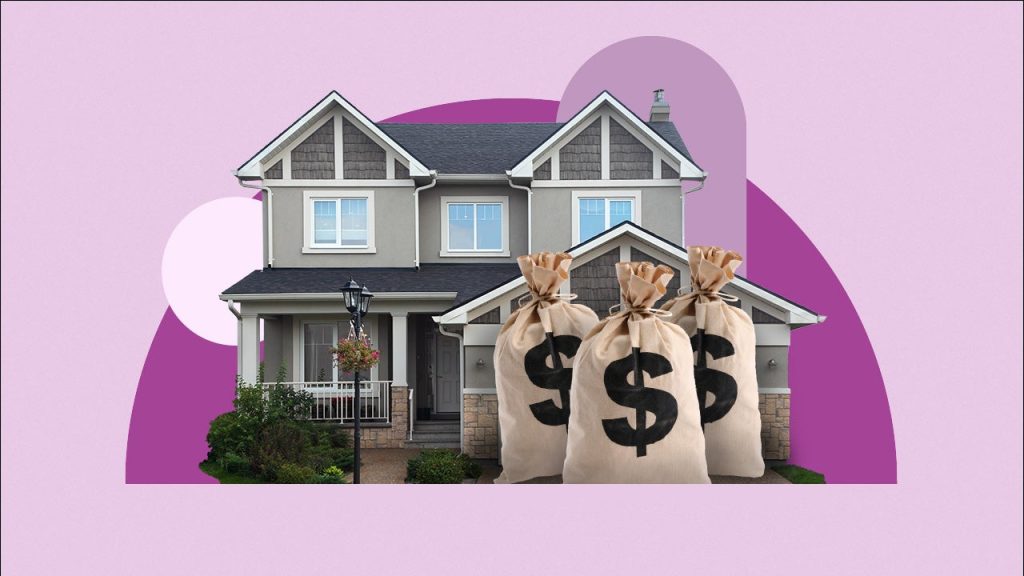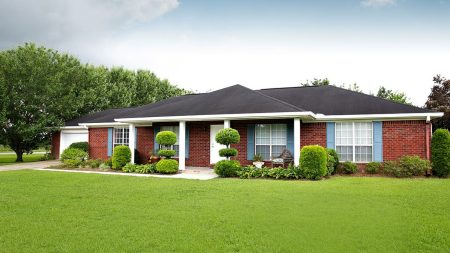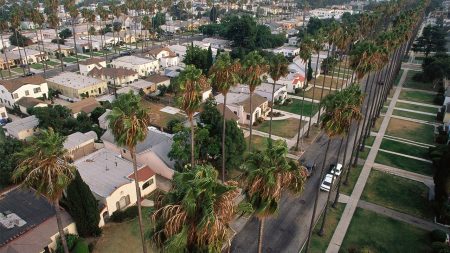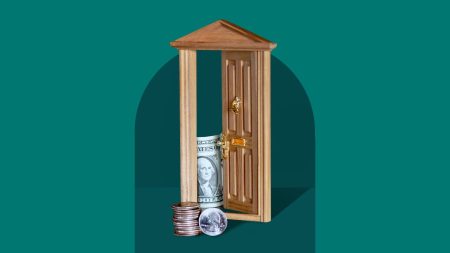Key takeaways
- You don’t need to put 20 percent down to get a mortgage, and some mortgages don’t even require a down payment.
- You can get a conventional mortgage with 3 percent down, but with anything less than 20 percent, you’ll have to pay mortgage insurance.
- Making a larger down payment can get you a lower interest rate.
Most — but not all — mortgage loans require a down payment, a percentage of the home value you pay upfront. How much you should put toward a down payment depends on the type of loan you’re applying for and your financial situation. In 2024, the median down payment on a home among all homebuyers was 18 percent, according to the National Association of Realtors, while first-time homebuyers put down a median of 9 percent.
Of course, that means many homebuyers put down more than those values — and many put down less. Ideally, you’ll want to make as large a down payment as you can comfortably afford. This will increase your approval odds, help you possibly avoid mortgage insurance and hopefully earn you a more affordable monthly mortgage payment.
How much is a down payment on a house?
You might have heard you’re required to put down 20 percent on a home. In truth, there’s no across-the-board minimum down payment.
A conventional loan down payment could be as little as 3 percent. Federal Housing Administration (FHA) loans require as little as 3.5 percent, and U.S. Department of Veterans Affairs loans, or VA loans, and U.S. Department of Agriculture loans, or USDA loans, typically have no down payment requirement at all.
Among Bankrate users, 42 percent, or nearly 260,000 users, plan to make a down payment of less than 20 percent, according to Bankrate’s 2024 Annual Data report.
How does your credit score impact your down payment?
The lower your credit score, the more you may be required to pay upfront toward your home.
For example, FHA loan borrowers may have credit scores as low as 500. However, if your score is 579 or below, you’ll need to make a 10 percent down payment. If you have a score of 580 or higher, you can qualify to put down only 3.5 percent.
With other types of mortgages, a lower credit score may not increase your required down payment, but it is likely to increase your overall costs. If you qualify for a mortgage, you’ll typically receive a higher mortgage rate than a borrower with a lower credit score — and that raises the total cost of your mortgage.
Minimum down payment requirements
| Loan type | Minimum down payment |
|---|---|
| Conventional conforming loan | 3 percent |
| Jumbo loan | 10 percent |
| FHA loan | 3.5 percent |
| VA loan | None |
| USDA loan | None |
| Second home or investment property | 10-25 percent |
Conventional loan: 3 percent down payment
The down payment requirements for a conventional loan on a primary residence vary depending on the lender, the borrower and the property type. For example, first-time homebuyers and buyers with low to moderate incomes could qualify for a fixed-rate conventional loan with a 3 percent down payment.
However, you may or may not qualify to make your lender’s lowest offered down payment. The amount you must put down will depend on your:
- Credit score
- Debt-to-income ratio
- Savings and other assets
- House of choice
Whatever the minimum required down payment on your conventional loan, keep in mind that if you put down less than 20 percent, you’ll have to pay for private mortgage insurance (PMI). However, once you reach 20 percent equity in your home, you can request that your lender remove PMI from your bill.
Jumbo loan: 10 percent down payment
Jumbo loans are a specific type of conventional mortgage for high-priced properties. In 2025, homes that cost more than $806,500 in most markets will need a jumbo loan, though in high-cost areas, the limit may be as high as $1,209,750. Because of their size, jumbo loans typically require 10 percent down or more.
FHA loan: 3.5 percent down payment
FHA loans require a minimum down payment of 3.5 percent with a credit score of at least 580. If you have a credit score between 500 and 579, you’ll need a 10 percent down payment.
No matter how large your down payment on an FHA loan, you’ll be required to pay mortgage insurance premiums (MIPs). There are two types of MIP: an upfront MIP paid at closing that’s 1.75 percent of the loan amount, and an annual MIP that’s added to your monthly mortgage payment. The annual MIP is based on the size of your down payment, your loan amount and your loan term, but it ranges from 0.15 to 0.75 percent of your total loan amount.
If you put down 10 percent or more, and you took out your FHA mortgage after June 3, 2013, this annual MIP can be removed after 11 years. Otherwise, you’ll pay this expense for the life of the loan.
VA loan and USDA loan: No down payment required
The VA and USDA both back zero-down payment loans for qualified homebuyers.
VA loans are available to qualifying members of the armed forces, veterans and their surviving spouses. USDA loans, on the other hand, are available to borrowers purchasing homes in designated rural areas. The USDA has maps on its website that show eligible areas.
Neither loan program requires mortgage insurance. With VA loans, you’ll pay a one-time funding fee, which ranges from 1.25 percent to 3.3 percent depending on how many VA loans you’ve had, your loan type and your down payment amount. USDA loans have an upfront guarantee fee of 3.5 percent of the loan amount and an annual fee of 0.5 percent of the average annual loan balance. Your lender will be charged this fee and may pass the cost on to you.
Second homes and investment properties: 10 percent to 25 percent
If you’re buying a second home or an investment property with a conventional loan, the down payment requirement is usually higher than for a primary residence. Second homes typically start at 10 percent, and investment properties can require as much as 15 to 25 percent, depending on your creditworthiness and financial situation.
How much should you put down on a house?
Beyond the requirements, how much you should put down on a house is a personal decision. Consider:
- Your financial goals: Is your goal to build home equity, or would you prefer to invest that money elsewhere, such as a retirement fund?
- How long you plan to stay in the house: Is this a starter home, or do you plan on being there long term? If you plan on selling in five to 10 years, you might not be as interested in putting a lot of money down.
- Your emergency savings: Don’t deplete your emergency fund just to make a larger down payment on a house. You’ll need the cushion for unexpected expenses.
- Home needs: If you need to invest in a larger home – for example, if you need home office space or a guest room — you may have to put less money down relative to your loan size. If you’re downsizing, on the other hand, a big down payment may be easier to manage.
- Closing costs: Closing costs are a bundle of fees paid when you finalize your mortgage. They can include attorney fees and a loan origination fee, and they usually cost 2 to 5 percent of the principal of your mortgage. If your closing costs are on the higher end of that range, they may eat into your down payment savings.
- Costs to upgrade and repair the home: When you move, you’ll likely need to pay for repairs or home improvements and buy new furniture or appliances.
Benefits of making a larger down payment
Your ability to save for a down payment is a good sign you’re ready for the financial commitment of homeownership. Here are some clear benefits to waiting until you can make a bigger down payment:
- Lower mortgage rate: The less money you borrow as a percentage of the home’s value, the less risk your loan poses to the mortgage lender. As a result, larger down payments tend to correlate with lower interest rates.
- More equity: The greater the percentage of your home you own outright, the more equity you have. That can be handy if you’re looking to finance a renovation project in the short term. You can tap your home equity through a cash-out refinance, home equity loan or home equity line of credit (HELOC).
- Lower monthly payments: Because you’re borrowing less money and you likely have a lower interest rate, you can expect a lower monthly mortgage payment.
- Cheaper closing costs: The fees you pay to your lender at closing are usually calculated as a percentage of your loan’s total value, so if you borrow less, your closing costs will be lower, too.
- More competitive offer: If you’re in a seller’s market and competing with several other buyers, a larger down payment can make your offer more competitive. Being able to put up more cash might give the seller confidence that your loan will close.
- Lower chance of becoming underwater on your mortgage: If you finance too much of your home, and it ends up losing value, you could end up owing more money than your home is worth.
Benefits of making a smaller down payment
Even if you can afford it, making a big down payment on a house isn’t always the best decision. Here are some reasons why you may want to put less money down:
- It lets you buy a home: If a down payment is your main obstacle to homeownership, making a lower one could be smart.
- More money for repairs or renovations: If you’re buying a home that needs some investment, and you could theoretically pay for the repairs in cash, you may choose to make a lower down payment.
- Buying a more expensive home: If you take advantage of a lower down payment mortgage, you could buy a bigger home with the same money you would use to put 20 percent down on a cheaper home.
- Not draining your savings: By putting less down, you’re potentially keeping money in the bank which you can use elsewhere. If you put that money into your house, you might get it back — and then some — when you sell or refinance.
- Investing it elsewhere: While homes are seen as secure investments, investors may prefer to put their money into the stock market where they could see a higher return.
How to calculate your down payment
Because down payments are expressed as a percentage of the home’s sales price, you can multiply the sales price by your target percentage to determine how much you’ll need to put down. Here are some examples of how much the down payment on a house would be at different price points:
| Median home price* | 3% down | 9% down | 18% down | 20% down |
|---|---|---|---|---|
|
Midwest: $298,600 |
$8,958 | $26,874 | $53,748 | $59,720 |
|
South: $361,800 |
$10,854 | $32,562 | $65,124 | $72,360 |
|
Northeast: $478,900 |
$14,367 | $43,101 | $86,202 | $95,780 |
|
West: $614,500 |
$18,435 | $55,305 | $110,610 | $122,900 |
|
*Regional median existing single-family home sale prices, December 2024, National Association of Realtors |
You can use Bankrate’s mortgage down payment calculator to get a sense of how different down payment amounts impact your monthly mortgage payment, and the interest you can save by putting more money down.
FAQ
Read the full article here










